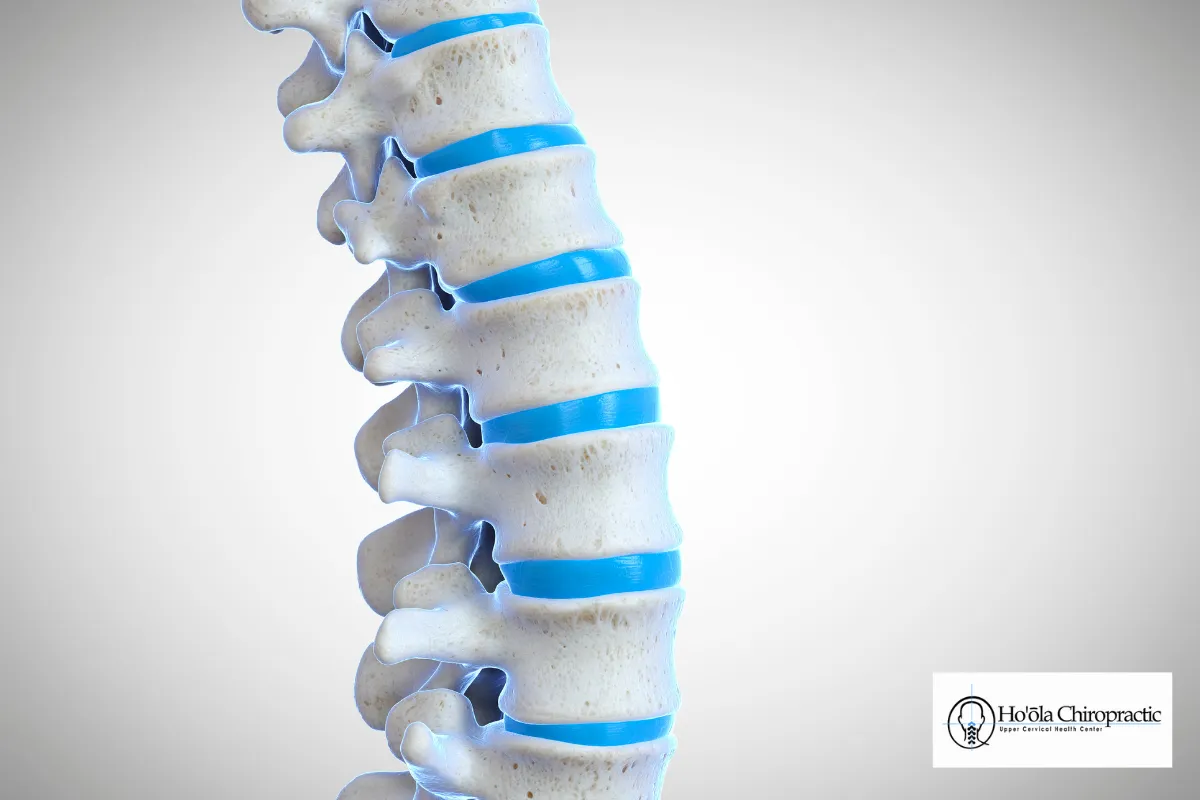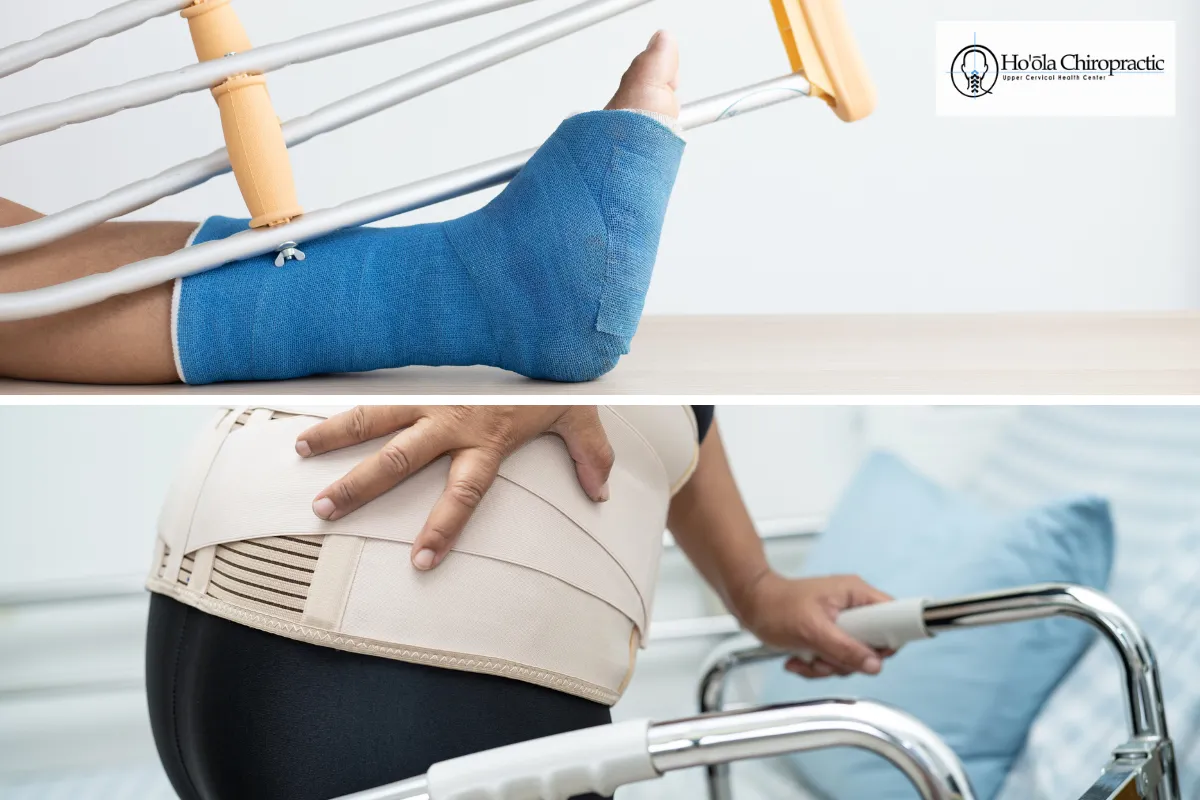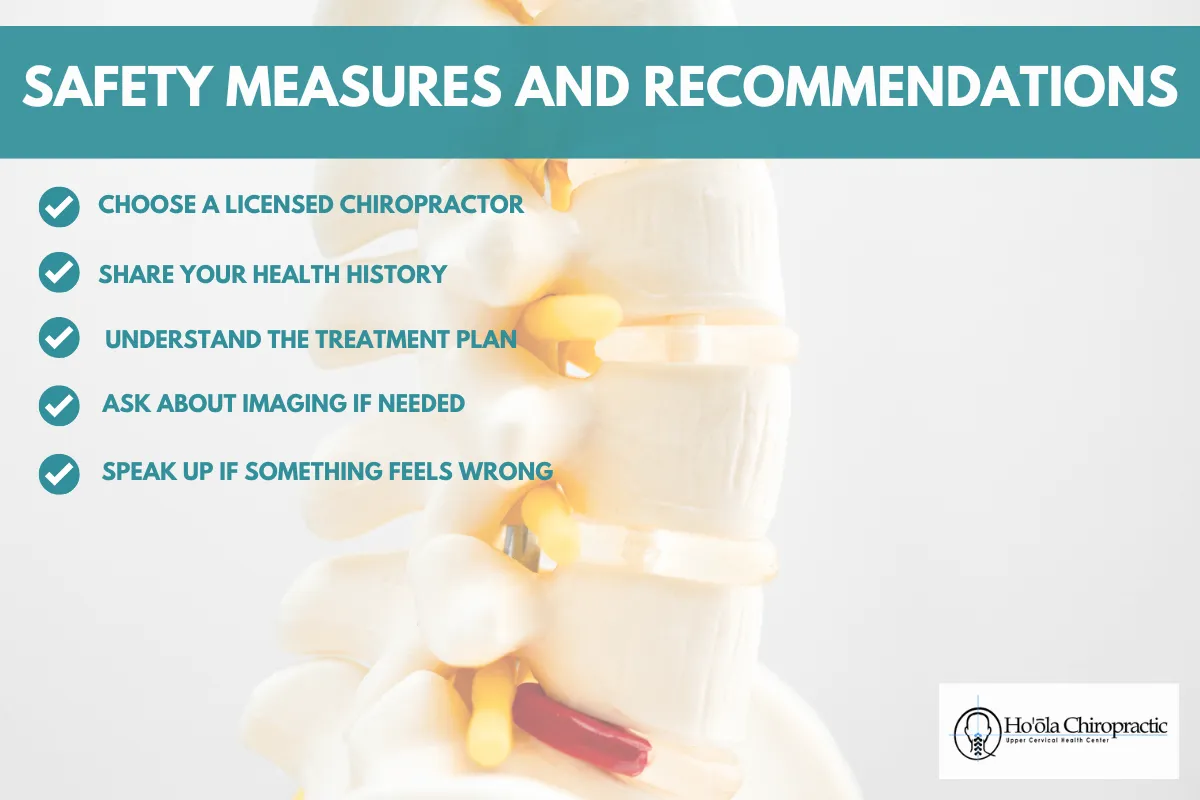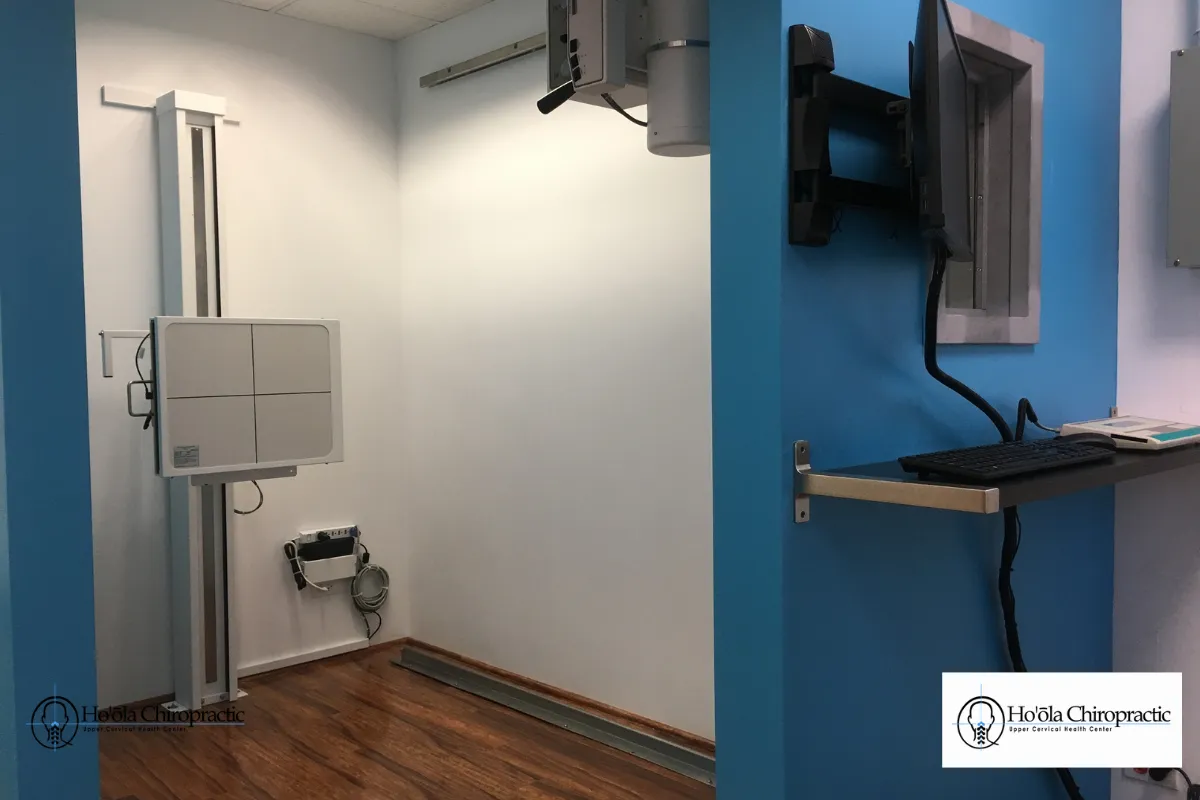Getting a spinal adjustment might sound a little scary if you’ve never had one before. But don’t worry—chiropractic care is something millions of people turn to when they have back pain, neck pain, or stiffness. Like any treatment, though, it’s important to understand what to expect, especially when it comes to side effects. In this article, we’ll explain the common and rare side effects of spinal adjustments, what spinal subluxations are, and how to stay safe when visiting a chiropractor.
What Is a Spinal Adjustment?

A spinal adjustment, also called spinal manipulation, is a technique used by chiropractors to help align the spine. They apply gentle pressure or a quick movement to specific parts of your back or neck. The goal is to improve movement, reduce pain, and help your body work better.
Many people get spinal adjustments to help with:
- Lower back pain
- Neck pain
- Headaches
- Joint issues
- Muscle stiffness
Chiropractors believe that when the spine is out of alignment—called a spinal subluxation—it can cause problems throughout the body. By fixing these subluxations, they help your body heal naturally.
Common Side Effects of Spinal Adjustments

Most people who visit a chiropractor feel relief, better movement, and even improved posture. But it’s also common to feel a few changes after your session. That’s your body adjusting to a new alignment—and it’s usually a good thing!
Here are some typical, short-term side effects:
1. Mild Soreness or Tenderness
Your muscles might feel a little sore around the area that was treated—kind of like how you feel after a new workout. This usually:
- Happens within the first 24 hours
- Feels like muscle fatigue or a mild ache
- Goes away in a day or two
2. Headache
Some people feel a light headache after a neck adjustment. This can be caused by:
- A change in blood flow or spinal position
- Your body’s reaction to joint movement
Drinking water, resting, and taking it easy usually helps.
3. Fatigue or Tiredness
After your spine is adjusted, your nervous system kicks into gear. That shift can make you feel tired or groggy, especially if your body’s been out of balance for a while.
It’s totally normal. A short nap or good night's sleep usually does the trick.
4. Stiffness or Tightness
Feeling stiff the next morning? That’s your muscles reacting to their new position. This is a temporary effect and can be relieved with:
- Gentle stretching
- A warm compress
- Staying hydrated
5. Dizziness or Light-Headedness
Occasionally, people feel a little dizzy after their adjustment—especially if they stood up quickly afterward. This doesn’t usually last more than a few minutes.
Rare but Serious Complications

Let’s be clear—serious side effects from spinal adjustments are extremely rare, especially when performed by a trained, licensed chiropractor. But it’s still smart to know what’s possible.
These complications don’t happen often, but here’s what to look out for:
1. Stroke After a Neck Adjustment (Cervical Artery Dissection)
- Occurs in very rare cases (about 1 in a million)
- Can happen if an artery in the neck is damaged
- Signs include dizziness, slurred speech, or vision problems after treatment
This is why chiropractors always screen patients carefully before doing neck adjustments.
2. Nerve Issues
- Tingling, numbness, or weakness could mean nerve irritation
- It usually resolves quickly, but tell your chiropractor if it happens
3. Herniated or Slipped Disc
If you already have disc issues, a spinal adjustment might make it worse in very rare cases. Be sure to mention any history of:
- Back injuries
- Sciatic pain
- Disc problems
4. Bone Fractures
People with low bone density (like those with osteoporosis) are at higher risk for fractures. That’s why chiropractors will ask about your bone health before any adjustment.
5. Serious Pain That Doesn’t Go Away
If you experience sharp pain, trouble moving, or anything that feels “off” after an adjustment—don’t wait. Contact your chiropractor or medical provider right away.
Risk Factors and Contraindications

Chiropractic care is safe for most people, but it’s not for everyone. Some conditions increase your risk for complications.
People Who Should Be Extra Cautious:
- Those with osteoporosis
- Anyone with spinal cancer or tumors
- People who’ve had spine surgery
- Those with bleeding disorders or who take blood thinners
- Patients with signs of stroke or poor circulation
Chiropractors Use Screening Tools to Stay Safe
Before adjusting your spine, a chiropractor may:
- Take a full health history
- Ask about medications
- Request X-rays or MRIs if needed
They’ll also explain what’s safe, what’s not, and whether spinal manipulation is the right approach for you.
Safety Measures and Recommendations

Choosing the right chiropractor and knowing what to expect are key to staying safe and getting the most out of your chiropractic care in Honolulu, Hawaii. Here are some important tips:
1. Choose a Licensed Chiropractor
Not all spine adjustments are the same. Make sure your chiropractor is:
- Fully licensed in Hawaii
- Experienced with your specific issue
- Able to clearly explain what they’re doing
If you’re not sure, ask questions. A good chiropractor will always be happy to answer.
2. Share Your Health History
Tell your chiropractor if you:
- Have had surgeries
- Have conditions like arthritis, osteoporosis, or heart problems
- Are on medications like blood thinners
This helps them adjust their technique and keep you safe.
3. Understand the Treatment Plan
A clear treatment plan helps you track progress and stay informed. It should include:
- How many sessions are recommended
- What types of adjustments will be used
- What results to expect
4. Ask About Imaging If Needed
Sometimes, an X-ray or MRI is necessary—especially if you’ve had long-term pain or injury. It gives your chiropractor a clearer picture of what’s going on.
5. Speak Up If Something Feels Wrong
If something doesn’t feel right—during or after your adjustment—say something. Your comfort and safety should always come first.
What Happens After Your First Adjustment?

After your first spinal adjustment, your body might feel different—and that’s normal. Here’s what to expect and how to take care of yourself:
How You Might Feel:
- Looser or more flexible
- Taller or straighter
- A bit sore or tired
- Clear-headed and more relaxed
Some people even feel a little emotional afterward. That’s because your nervous system just experienced a shift—it’s all part of the process.
Post-Adjustment Tips:
- Drink Water – This helps flush out toxins and supports healing.
- Rest If Needed – Don’t push your body too hard after your first session.
- Move Gently – Light walking or stretching is fine, but skip heavy workouts for a day or two.
- Use Ice or Heat – If you're sore, use a cold or warm compress on the area.
- Follow Your Chiropractor’s Advice – They might suggest exercises or posture tips to help your spine stay aligned.
Feel the Difference with Safe Chiropractic Care in Honolulu

Spinal adjustments can be a powerful tool for managing back pain, improving mobility, and supporting overall wellness—especially when done with care.
In Honolulu, many people seek chiropractic care to stay active, surf-ready, and pain-free. Whether you’re visiting a chiropractor for the first time or returning for maintenance, understanding what to expect helps you feel more confident.
Remember:
- Most side effects are mild and short-lived
- Serious complications are very rare
- Clear communication and licensed care make all the difference
If you’re ready to explore chiropractic care or you're curious about spinal subluxation, find a trusted chiropractor in Honolulu and take the first step toward feeling your best.
Honolulu Spine Adjustment – Ho'ola Chiropractic

Looking for safe, effective spine adjustments in Honolulu? At Ho'ola Chiropractic, we specialize in helping you feel your best through gentle, personalized chiropractic care. Whether you’re dealing with back pain, neck tension, or a possible spinal subluxation, our experienced team is here to help your body heal naturally. We’ll walk you through every step, explain what to expect, and make sure you’re completely comfortable with your care plan. Most of our patients feel real relief after just one visit—and we’re proud to keep our local Honolulu community moving and pain-free. From improving posture to relieving pressure on your nerves, a professional spinal adjustment can make a big difference.
Ready to take that first step toward a healthier spine? Call Ho'ola Chiropractic today at (808) 772-8284 to book your appointment. Let us help you feel better, move better, and live better—right here in Honolulu.
Frequently Asked Questions About Side Effects of Spine Adjustment
What happens when your spine is adjusted?
A chiropractic adjustment, also known as spinal manipulation therapy, involves applying a controlled force to specific spinal joints using hands or specialized instruments. The goal is to improve range of motion, reduce musculoskeletal pain, and restore spinal health.
When your spine is adjusted:
- A chiropractor evaluates your medical history, posture, and joint function.
- During the adjustment, you might hear a popping sound—this is gas being released from the joint.
- The treatment helps relieve muscle spasms, reduce joint pain, and improve mobility.
For most chiropractic patients, adjustments can:
- Improve alignment and balance
- Decrease muscle soreness
Help with conditions like low-back pain and acute neck pain
Afterward, patients may feel an adjustment period as their body adapts. This might include minor side effects such as stiffness or light fatigue.
According to a systematic review published in Chiropractic & Manual Therapies, most patients experience positive outcomes, especially when care is provided by experienced chiropractors. In some cases, additional therapies like ice packs or stretching may be recommended.
Spinal adjustments are part of manual therapy and are considered an effective treatment for many people with chronic pain, especially when drug-free options are preferred.
What not to do after a spinal adjustment?
After a chiropractic adjustment, your body enters a recovery and realignment phase. This is a critical time to protect your progress and reduce the chance of adverse effects. What you do (or don’t do) after treatment can influence how quickly you feel better.
Avoid the following:
- Heavy lifting or intense workouts
- These can strain spinal joints still stabilizing after manual therapy.
- These can strain spinal joints still stabilizing after manual therapy.
- Prolonged sitting or poor posture
- This may reverse the benefits of your joint manipulations.
- This may reverse the benefits of your joint manipulations.
- Skipping hydration
- Drinking water helps flush toxins and reduces muscle pain.
- Drinking water helps flush toxins and reduces muscle pain.
- Ignoring new symptoms
- Watch for adverse reactions, especially unusual pain or numbness. If symptoms worsen, consult your healthcare provider.
- Watch for adverse reactions, especially unusual pain or numbness. If symptoms worsen, consult your healthcare provider.
- Self-adjusting
- Trying to twist or crack your own back can increase the risk of complications in chirotherapy manipulation.
- Trying to twist or crack your own back can increase the risk of complications in chirotherapy manipulation.
You should also avoid applying heat if you’re already experiencing muscle soreness—an ice pack is better during the first 24 hours.
Let your body rest, move gently, and follow your chiropractor’s aftercare plan. These guidelines help support healing and avoid increase in symptoms or potential compression effects from improper movement.
Remember, each body responds differently. Stay in touch with your primary care physician or chiropractic professional if anything feels off.
Wat are some of the conditions for which spinal manipulation is used?
Spinal manipulation therapy, a cornerstone of manipulative therapy, is used to address a range of health conditions—primarily those affecting the musculoskeletal system. This includes bones, joints, muscles, and surrounding tissues.
Some of the most common conditions include:
- Low-back pain
- Neck pain relief, including acute neck pain
- Joint pain
- Chronic pain and muscle pain
- Headaches, especially tension and cervicogenic types
- Limited range of motion in the spine or extremities
- Sciatic nerve pain
- Poor posture or spinal alignment
- Muscle spasms
Chiropractic techniques can also support people with routine health maintenance by improving spinal balance and reducing nervous system irritation.
Research shows that manipulative techniques, especially those guided by licensed professionals, can be an effective treatment for many patients—especially those looking for alternatives to drug therapy.
It’s essential to work with manual therapists or chiropractic professionals who understand how to tailor adjustments based on your medical history, age, and physical condition. This is especially true for elderly patients, where techniques may need to be modified.
Always consult with a healthcare professional to ensure chiropractic manipulation is right for your specific condition.
Can chiropractic adjustments worsen my condition?
In rare cases, chiropractic manipulations can lead to an increase in symptoms or even adverse effects. While most chiropractic patients benefit from improved mobility and reduced pain, certain factors can increase the risk of complication in chirotherapy manipulation.
Potential worsening of symptoms may include:
- Heightened muscle soreness or joint pain
- Swelling or inflammation after aggressive rotational manipulation
- Nerve irritation if pre-existing spinal subluxation is severe
- Rare risks like vertebral artery dissection or cervical artery dissections, which could lead to cerebrovascular accidents
These are extremely rare and mostly associated with high-velocity cervical spine manipulation therapy in vulnerable individuals. A detailed medical history, combined with diagnostic imaging, helps reduce these risks.
Manual therapists trained in safe chiropractic techniques will always adjust their approach based on your body type and health status. It's also important that patients:
- Communicate clearly about discomfort
- Report any prior vascular accidents or neck trauma
- Avoid returning for treatment if symptoms significantly worsen
If your condition doesn't improve—or gets worse—your healthcare provider may recommend alternative care.
Are there any risks associated with chiropractic treatment for children?
Yes, there are potential side effects when treating children with spinal manipulation therapy, although most are minor side effects. Chiropractic care for kids focuses on gentle techniques designed for developing bodies, and many licensed professionals have special training in pediatric care.
Common reasons for pediatric chiropractic visits include:
- Torticollis (neck stiffness in infants)
- Colic
- Postural problems
- Sports-related injuries
- Scoliosis
However, concerns have been raised in medical circles about:
- Cervical manipulation in infants and toddlers
- Risk of arterial dissection if improper technique is used
- Rare cases of vertebrobasilar accidents or cerebral artery dissection
These risks are not common but are important to consider. A 2007 systematic review published in medical literature emphasized that manual therapy for children should only be done by experienced chiropractors with proper pediatric credentials.
Parents should:
- Review the chiropractor’s pediatric training
- Discuss any past health conditions
- Monitor for any adverse reactions, even mild ones
For safety, always consult your child’s primary care physician before starting treatment. While manipulation by chiropractors can support spinal health, it must be handled with care and clinical judgment, especially in young children.



